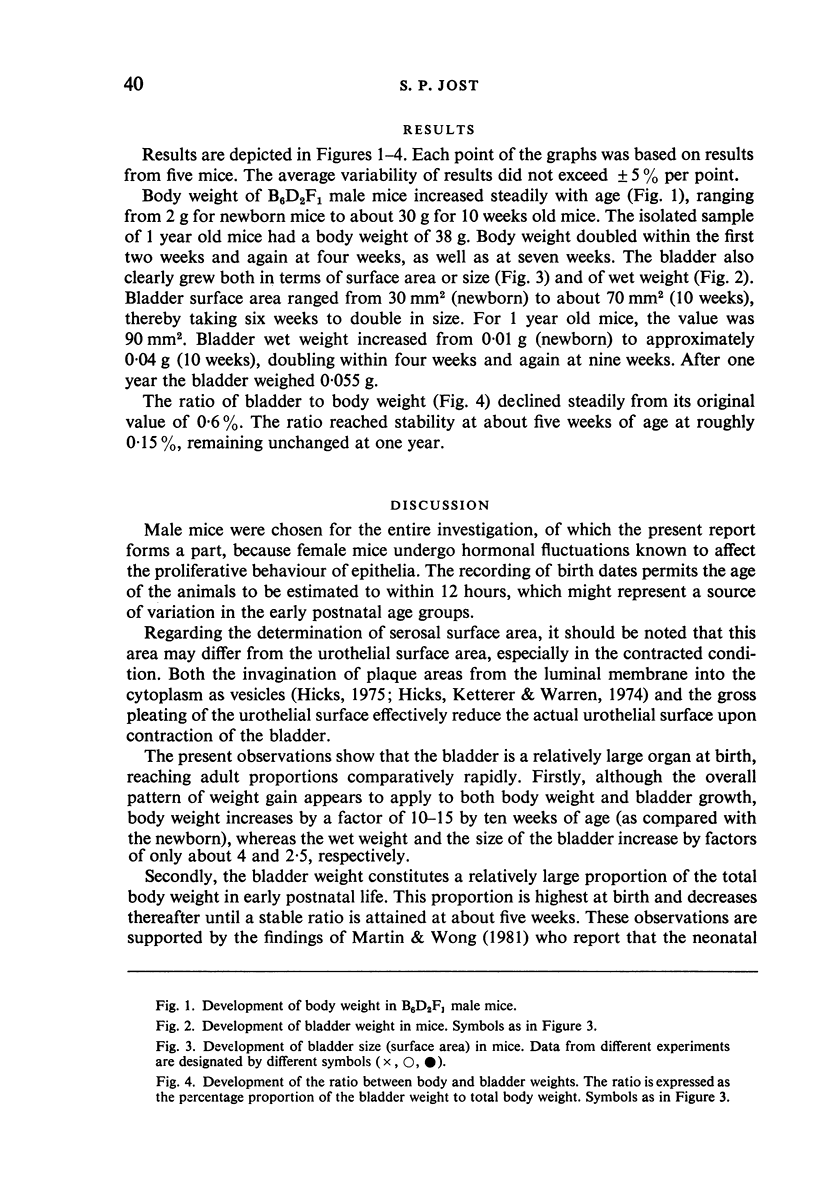Abstract
Data are presented on the postnatal growth of the mouse bladder. Both bladder size (measured as surface area) and bladder wet weight increase steadily with age, respectively reaching 2.5 times and 4 times their newborn values by the age of ten weeks. Despite this growth, which may be due principally to non-urothelial components of the bladder, the body weight rises 10-15 fold above the newborn levels. The ratio of bladder weight to the total body weight steadily declines from a peak value in newborn mice to a stable plateau reached at about five weeks of age. The results indicate that a fairly mature bladder exists at birth.
Full text
PDF




Selected References
These references are in PubMed. This may not be the complete list of references from this article.
- Farsund T. Cell kinetics of mouse urinary bladder epithelium. I. Circadian and age variations in cell proliferation and nuclear DNA content. Virchows Arch B Cell Pathol. 1975;18(1):35–49. doi: 10.1007/BF02889232. [DOI] [PubMed] [Google Scholar]
- Hicks R. M. The mammalian urinary bladder: an accommodating organ. Biol Rev Camb Philos Soc. 1975 May;50(2):215–246. doi: 10.1111/j.1469-185x.1975.tb01057.x. [DOI] [PubMed] [Google Scholar]
- Martin B. F., Wong Y. C. Development and maturation of the bladder epithelium of the guinea pig. Acta Anat (Basel) 1981;110(4):359–375. doi: 10.1159/000145447. [DOI] [PubMed] [Google Scholar]


